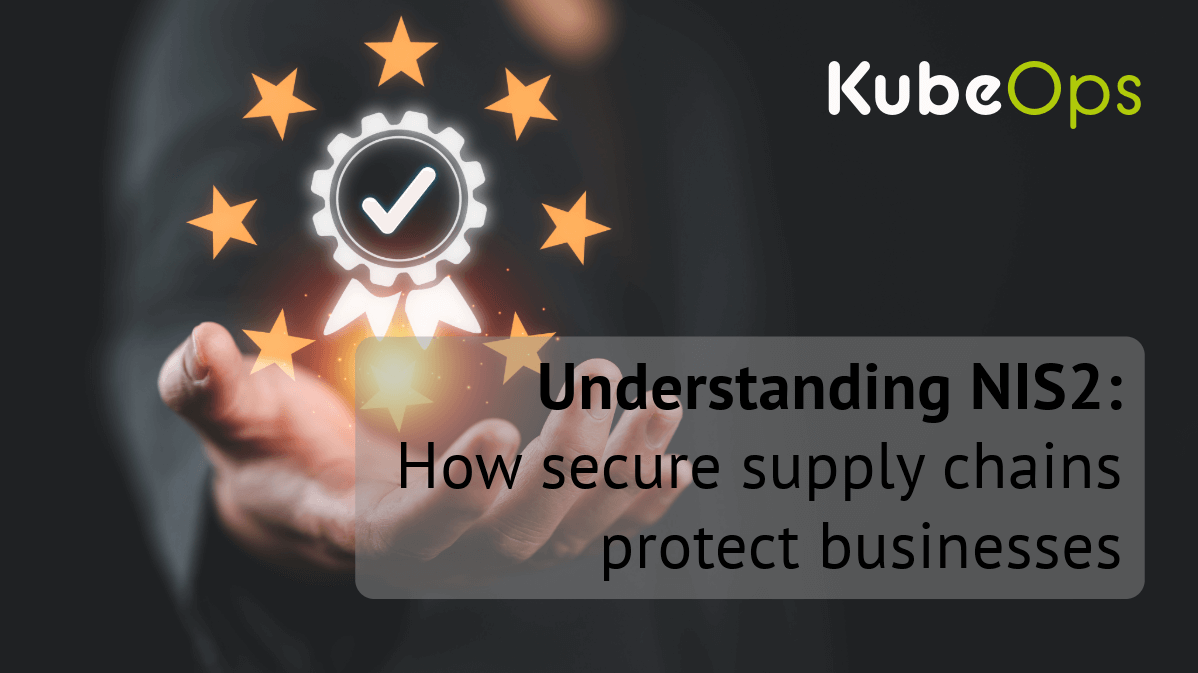Blogs
Understanding NIS2: How Secure Supply Chains Protect Businesses

Introduction:
The increasing reliance on digital infrastructures has made cybersecurity a top priority—especially for IT security leaders in critical sectors. With the Network and Information Security Directive (NIS2), the European Union is setting new standards. This directive requires robust security measures and the safeguarding of entire supply chains—a challenge that demands strategic decisions and technical expertise.
Why is this important? Studies show that supply chain attacks have increased by 40% in recent years. The infamous SolarWinds attack, which affected thousands of organizations worldwide, is just one example of how vulnerabilities in supply chains can have catastrophic consequences. With NIS2, the EU is addressing these threats by setting clear requirements to better protect businesses.
What Does the NIS2 Directive Require?
The NIS2 directive aims to enhance the resilience and security of digital infrastructures across the EU. Companies in critical sectors—such as energy, healthcare, transportation, and IT services—are required to meet strict security standards.
A key requirement is ensuring a secure supply chain, which includes:
- Code validation: All components, including software packages and container images, must be inspected and free from vulnerabilities.
- Integrity verification: Only signed and authenticated container images may be used.
- Version management: Security vulnerabilities in specific components must be identified and resolved quickly.
Why Is a Secure Supply Chain Critical?
Supply chains are a prime target for cybercriminals, as they can often compromise an entire organization’s IT infrastructure. For you, this means that a single vulnerability in any component can lead to far-reaching consequences—from data theft to the sabotage of critical systems.
A prominent example is the Log4j vulnerability: A flaw in a widely used software library caused global security crises. Incidents like this highlight the importance of securing not only your systems but the entire supply chain.
By building a secure supply chain, you instill trust in your systems and strengthen your position as an innovation leader:
- You ensure that the software and hardware you use are trustworthy and free from manipulation.
- You minimize the risk of vulnerabilities going undetected in production environments.
First Steps to NIS2 Compliance
As a decision-maker, you are responsible for driving your company’s security strategy. Here are the key measures to prioritize:
-
Code validation and auditing:
- Use tools like Snyk or Dependency-Check to identify vulnerabilities in software packages early.
- Implement regular security checks within your CI/CD pipeline.
-
Implement signature mechanisms:
- Ensure that only verified container images are deployed in your production environments.
- Tools like Cosign simplify the signing and verification of images.
-
Establish version management:
- Track the use of each component within your infrastructure.
- Automated systems like Dependabot help ensure timely security updates.
-
Conduct supply chain risk analysis:
- Identify vulnerabilities in your supply chain and prioritize actions to address them.
Conclusion:
The NIS2 directive introduces new requirements for businesses, but it also presents a clear opportunity: By prioritizing the development of a secure supply chain, you can not only ensure compliance but also strategically improve your company’s security standards.
With a secure supply chain, you build trust with your partners and customers while strengthening the resilience of your IT infrastructure. Take this opportunity to make your organization more resistant to threats—and establish yourself as a leader in cybersecurity.

